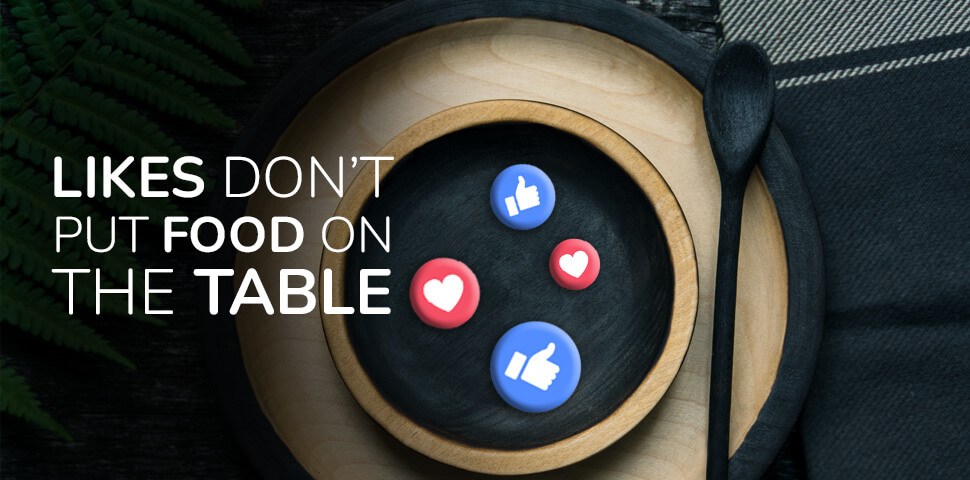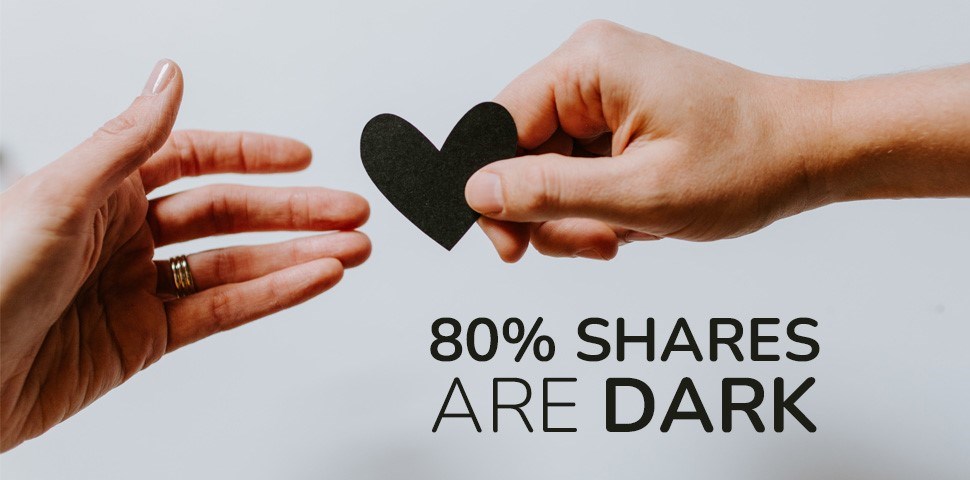The American poet and philosopher Ralph Waldo Emerson once said, “Vanity costs money, labour, horses, men, women, health, and peace […]. It is a long way leading nowhere.”
Vanity wasn’t a good thing in the 1800s. Or even in the 1990s, when Culture Beat said, “Call him Mr Raider, call him Mr Wrong, call him Mr Vain – call him insane (adding: “I know what I want. And I want it now. I want you. Cause I'm Mr Vain).”
Some of us are showing our age, but if your digital marketing measurement lies mostly in vanity metrics – stop. It’s costing your clients money and your agency labour. It might even cost you horses, women, health, and peace, but we’re not 100 percent sure on those.
It’s a bit like if you throw a party and gave out 500 flyers at the corner of Bolton and Jan Smuts, but only 10 people came. Sure, 500 people would’ve seen that you’re having a party, but only 10 actually rocked up.
Far too many marketers still rely on likes and follows to measure digital success. We’ll say it louder for the people at the back: vanity metrics might look impressive, but they don’t make a tangible difference – they don’t benefit the bottom line.

What are vanity metrics?
Vanity metrics are about volume. They’re a digital version of That Guy in the weights section whose guns are bigger than yours (and they’re bigger than what’s humanly possible). Vanity metrics include page views, visitor numbers or new-user gains, the size of an email database, ad impressions, social media followers and likes, post reach, and downloads (such as running totals of app or e-book downloads).
When they’re pulled into a client report, these numbers can make it look like you know what you’re doing, but they don’t tell the full story; they only paint a partial picture. Vanity metrics are dangerous because they tick boxes for marketers who don't know any better, and it’s an ‘easy sell’. Everyone understands what a like is, but they don't understand the broader scope of what should be happening, and whether business objectives are being met. At the end of the day, likes don’t increase sales or put food on the table.

Before we continue, we want to say that we’re not completely slamming impressions and follower numbers. Brand awareness has its place in a digital marketing strategy, but it can’t be done in isolation, and a client can’t blow their whole budget purely on visibility. That would be like putting your life savings in Africrypt. If you’re on a limited budget and you need sales, it’s off the table: a client can’t spend money with zero ROI. Ideally, you want awareness followed by a conversion strategy.
Conversations and interactions show real impact
Vanity metrics aren’t a true reflection of a brand’s value or what it offers. Remember, people may like a social post without clicking through to the brand’s website or what’s on offer. This means that the audience isn’t engaging properly – and engagement is key to digital marketing success in 2022.
Too often, we're not measuring the right thing: engagement. For example, sharing, commenting, saving for later, or even tagging – these metrics show that a piece of content or a post is worthy of attention and adds value. Engagement metrics show real impact – whether your content or website attracts, retains, and converts potential customers. Looking at these metrics lets you see what’s really working, and what isn’t.
Don’t forget about dark social
We live in a social world – globally, more than 70 percent of consumers increased their social media usage in the last year, which was more than ever before.
Despite this, not all social metrics can be tracked. Digital marketers stuck in a likes-and-numbers mindset often forget about what can’t be measured. Interactions like the second-degree connection who inboxed your personal LinkedIn and wanted to chat about the article on digital marketing outsourcing that you posted the other day. Or the other guy who heard about your business through a friend and wants to set up a meeting for a campaign he has in mind.
Along with privacy settings, real-world connections, word of mouth recommendations, a copy-pasted link sent in an email, a private messaging share – none of these can be tracked with analytics tools. They are ‘invisible’ metrics that form part of dark social, and they're a wasted opportunity. It’s been shown that dark social results in higher click-through rates (because the source is from someone you know), and it’s estimated that more than 80% of all shares are ‘dark.’

It's so easy to fall into the trap of likes and big audiences, but in an age of personalisation, it shouldn't be solely about the numbers. Attribution is getting harder, and attention spans are getting shorter: vanity metrics are nice to add to a report, but they won’t bring in more appointments or product sales. Don’t be That Guy; like Ralph Waldo Emerson said, focusing on vanity metrics will cost you money and lead you nowhere. Ditch the likes and focus on what creates impact and generates real results – then do more of that.
Need to up your engagement because likes and follows just aren’t cutting it? Get in touch; we can help with that.




